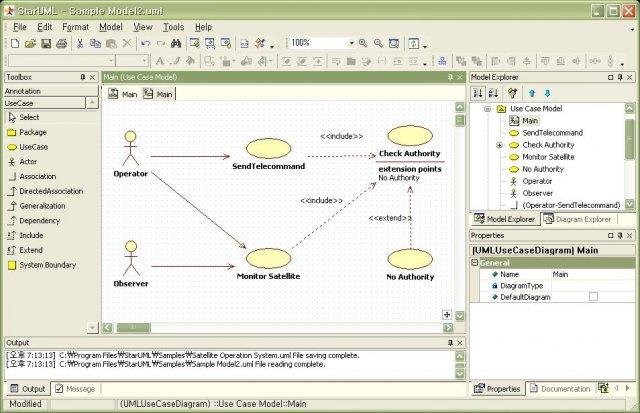

The length of the rectangle indicates the duration of the objects staying active. It is used to indicate that an object is active (or instantiated) during an interaction between two objects. The activation bar is the box placed on the lifeline. It organizes and schedules the interactions between the boundaries and entities and serves as the mediator between them.
#Input text staruml software
For example, in a customer service application, the Customer entity would manage all data related to a customer.Ī lifeline with a boundary element indicates a system boundary/ software element in a system for example, user interface screens, database gateways or menus that users interact with, are boundaries.Īnd a lifeline with a control element indicates a controlling entity or manager. They represent the different objects or parts that interact with each other in the system during the sequence.Ī lifeline notation with an actor element symbol is used when the particular sequence diagram is owned by a use case.Ī lifeline with an entity element represents system data. No two lifeline notations should overlap each other. A Quick Overview of the Various Parts of a Sequence Diagram Lifeline NotationĪ sequence diagram is made up of several of these lifeline notations that should be arranged horizontally across the top of the diagram. Each object has a column and the messages exchanged between them are represented by arrows. Sequence Diagram NotationsĪ sequence diagram is structured in such a way that it represents a timeline that begins at the top and descends gradually to mark the sequence of interactions. They can be used to model both simple and complex interactions between objects, making them a useful tool for software architects, designers, and developers. Sequence diagrams are commonly used in software development to illustrate the behavior of a system or to help developers design and understand complex systems. In simpler words, a sequence diagram shows how different parts of a system work in a ‘sequence’ to get something done. They illustrate how the different parts of a system interact with each other to carry out a function, and the order in which the interactions occur when a particular use case is executed. Sequence diagrams, commonly used by developers, model the interactions between objects in a single use case.
#Input text staruml how to
If you set the multiplicity for an association, set it on the From end and To end tabs of the properties window.This sequence diagram tutorial is to help you understand sequence diagrams better to explain everything you need to know, from how to draw a sequence diagram to the common mistakes you should avoid when drawing one. In multiplicity, type the desired value(s) for the multiplicity.For an attribute or operation, the window is opened directly after clicking the element. In the diagram, click the element, and then click to open the properties window.Setting the multiplicity via the properties pop-up window Removing the values will reset the multiplicity to the default of 1. Entering a single value implies the lower and upper value are the same (except for entering a single *). If you add two values, make sure you leave the two dots in between. Do the same for the other side, if needed. Click the multiplicity on one side of the association, and type the desired value(s).Setting the multiplicity directly in the diagram New attributes and operations have a default multiplicity of 1. When drawing an association, its multiplicity is automatically set to 0.1, which is not the UML default multiplicity. For attributes and operations, the multiplicity can only be set via their properties pop-up window.

The multiplicity of an association can be set directly in the diagram, or via the properties pop-up window of the association. In the diagram, an exact number of objects is displayed as a single number.Įxample: the interval 2.2 is displayed as 2 in the diagram.Īt least m objects but no more than n objects.Įxample: 3.8 is at least three and at the most 8 objects. This is the default multiplicity of an association according to UML.Įxample: 0.0 is no object, 3.3 is exactly three objects.


 0 kommentar(er)
0 kommentar(er)
